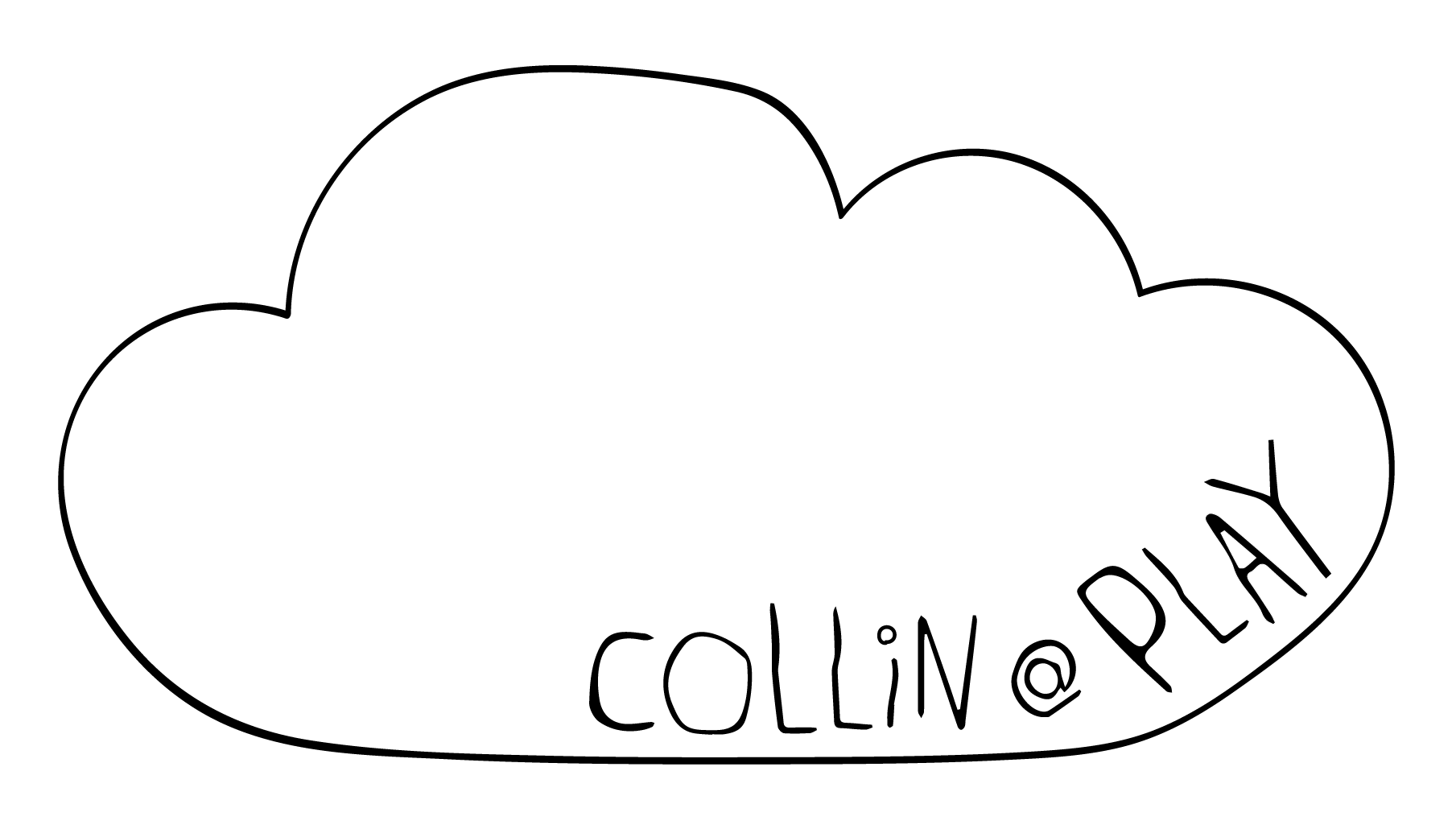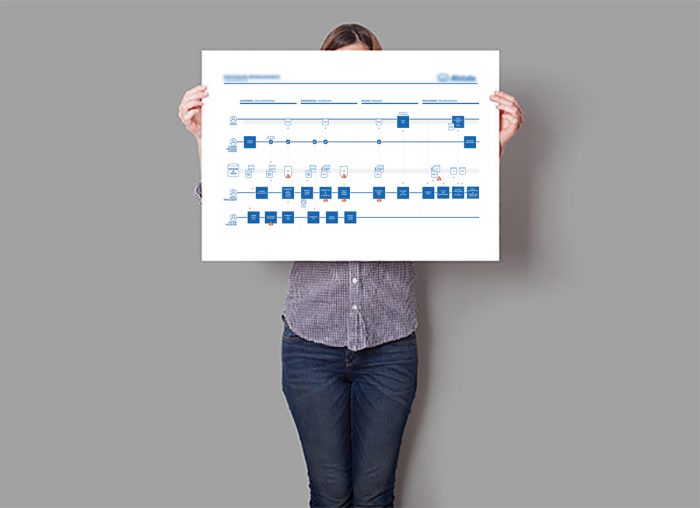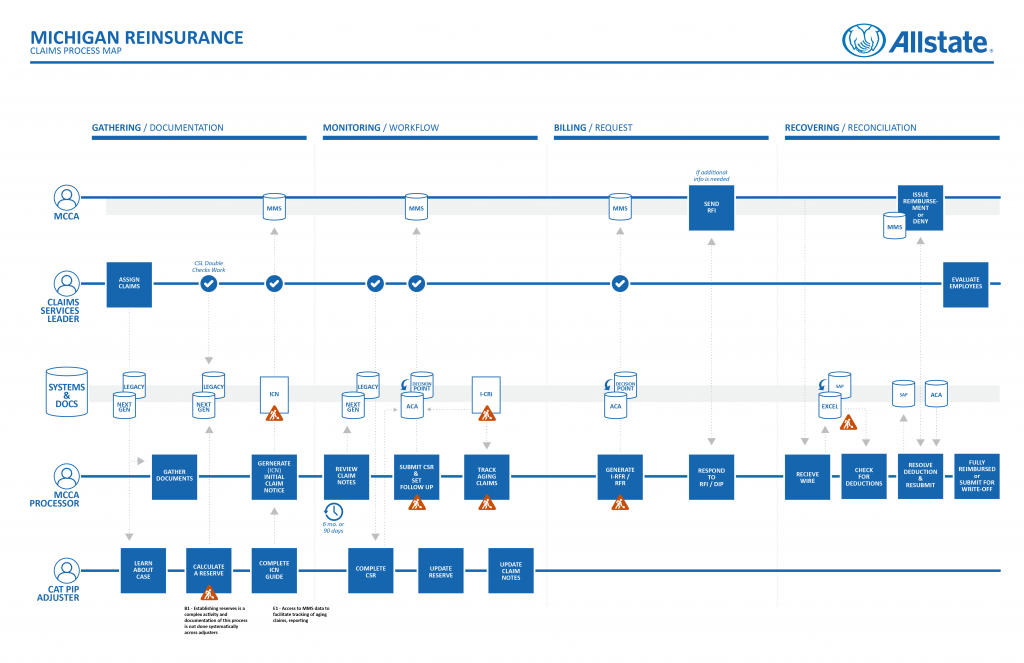
In this project we sought to understand and improve the user experience for claims adjusters, processors, and managers. We utilized service blueprints to understand backend processes and the current user experience to help describe the flow of information, as well as to show opportunities for improvement within the system. I worked as part of a four person team at Insitum, an international innovation consulting firm. We also had one person from the client’s design team dedicated to the project.
User Research – The project started with understanding the current user experience through user and stakeholder interviews and observations. We conducted several phone interviews and in context observations with customers, adjusters, processors, and system managers. It quickly became apparent how complex and tenuous this process was, and all teetering on the backs of several antiquated databases held together with the red tape of insurance regulations.
System Mapping – With resolve we dove into analyzing the interview data to define the flows of information between people and systems. We discovered avoidable redundancy, system flaws, emotional outbursts, and human error (of course). We also found a tight network of compassionate and dedicated employees working tirelessly, in spite a duct-tape and bubble gum system, to help the customer get the information and resources they need.
Opportunity Identification – From the mapping process we were able to identify several immediately implementable opportunities for improvement throughout the system. We pulled together compelling evidence from the research to support the opportunities in preparation for a ‘all hands on deck’ workshop with the broader client team.
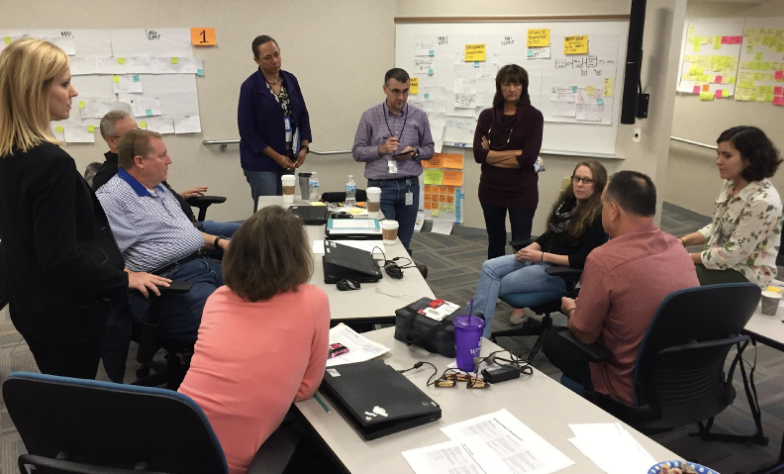
Workshop Facilitation – We planned and executed a three day co-creation workshop, bringing together three different teams from across the company to collaboratively ideate and roadmap solutions to the problem. We set up several stations, each focussed on a different opportunity spaces and rotated each team through. We progressed our focus through; understanding the challenge, getting inspired by external sources, generating new options, selecting promising directions, and sketching out refined solutions. Once we all felt there were strong potential ideas in the room, we started to prioritize and roadmap next steps. Having the engineers, leaders, and agents in the room really helped things become actionable. New project teams were formed. Less important projects were set aside. Alignment drove the necessary change forward.
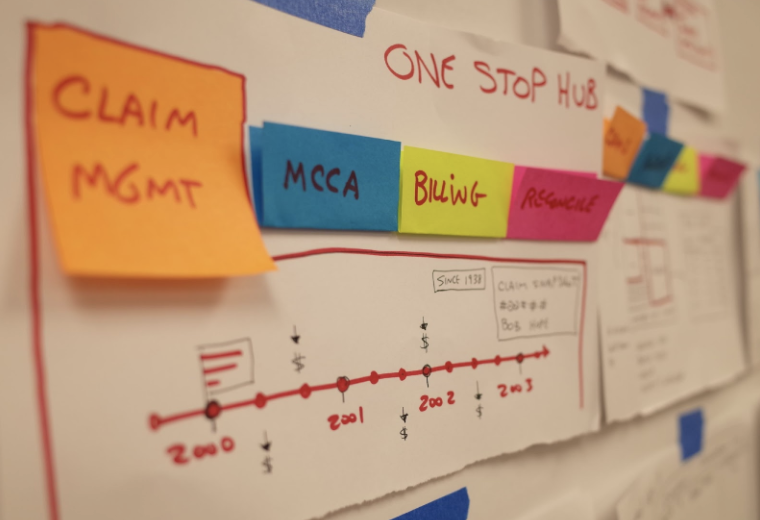
Communication – We developed a concept book and presentation to provide the client with an internal ‘sales’ tool to utilize as they seek internal funding for more of the resulting directions. Part of my role here was creating high level wireframes to explain some of the system solutions as well as creating custom illustrations to visualize some of the other solutions.
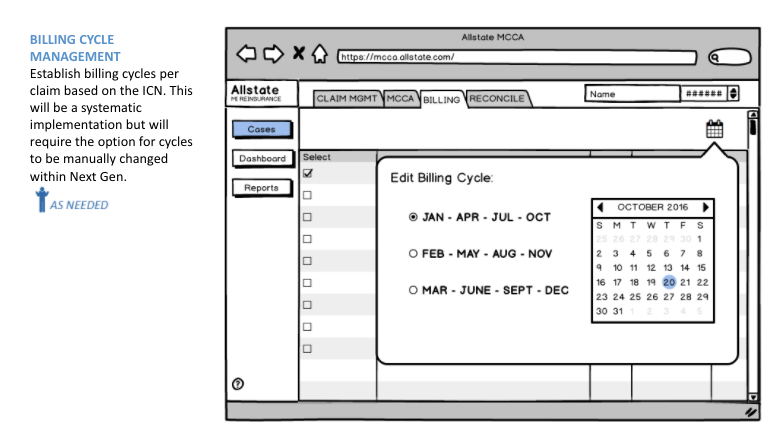
Utilizing a user centered approach for this type of problem was a bit of an experiment for the client. They were very pleased that the Insitum team was there to guide the way. They rehired the team to guide them through some of the bigger projects that resulted from this project.
